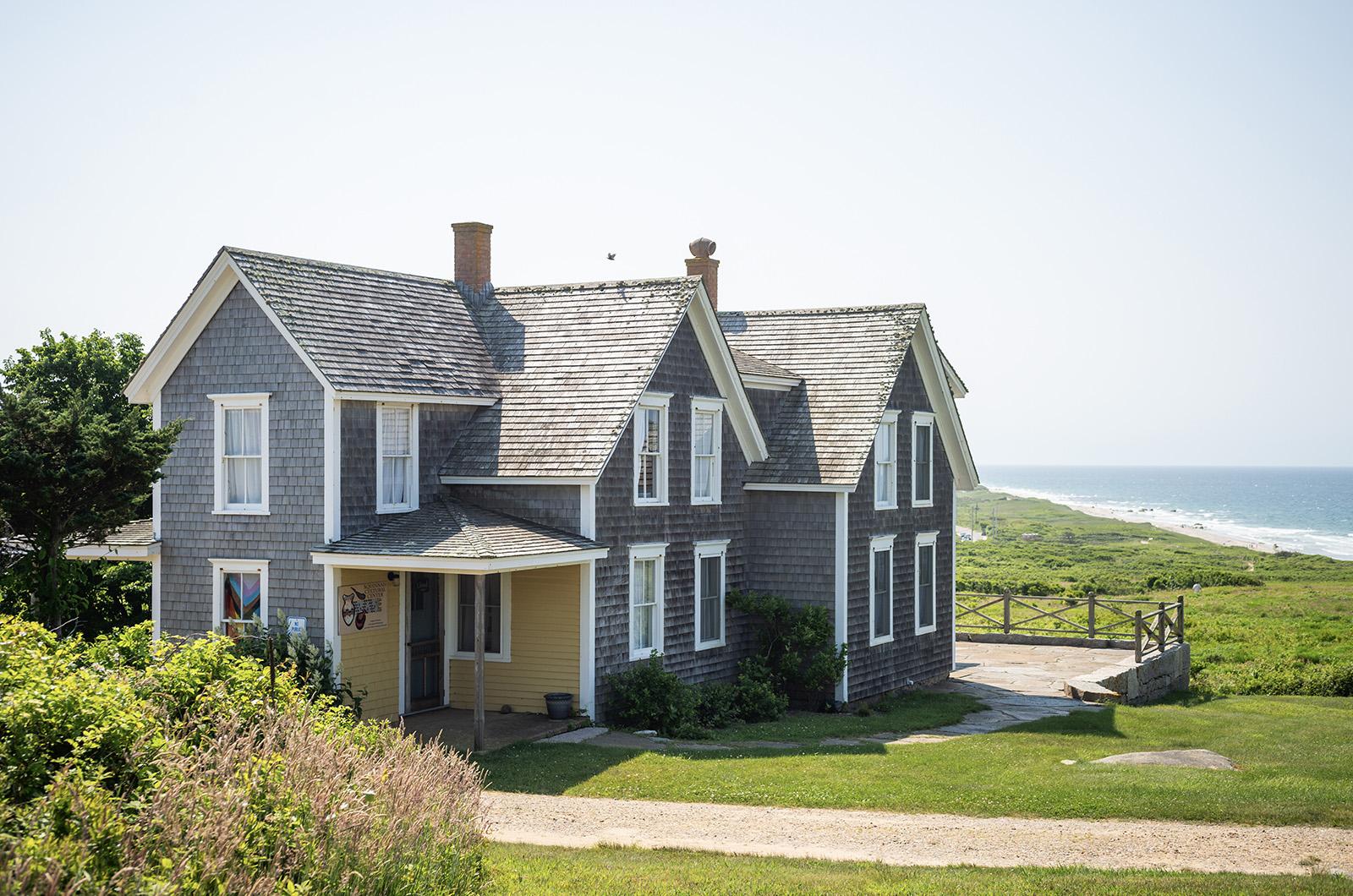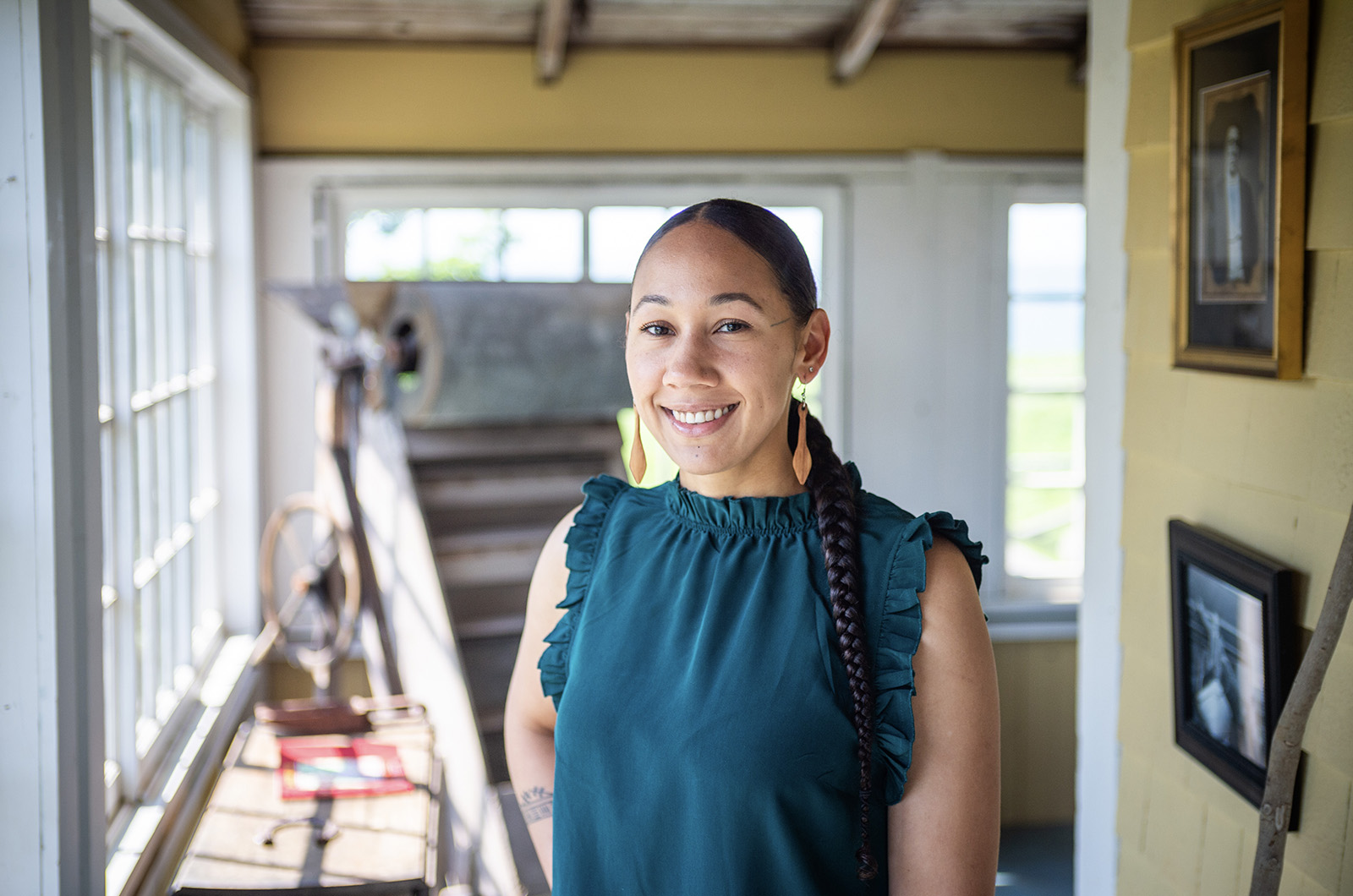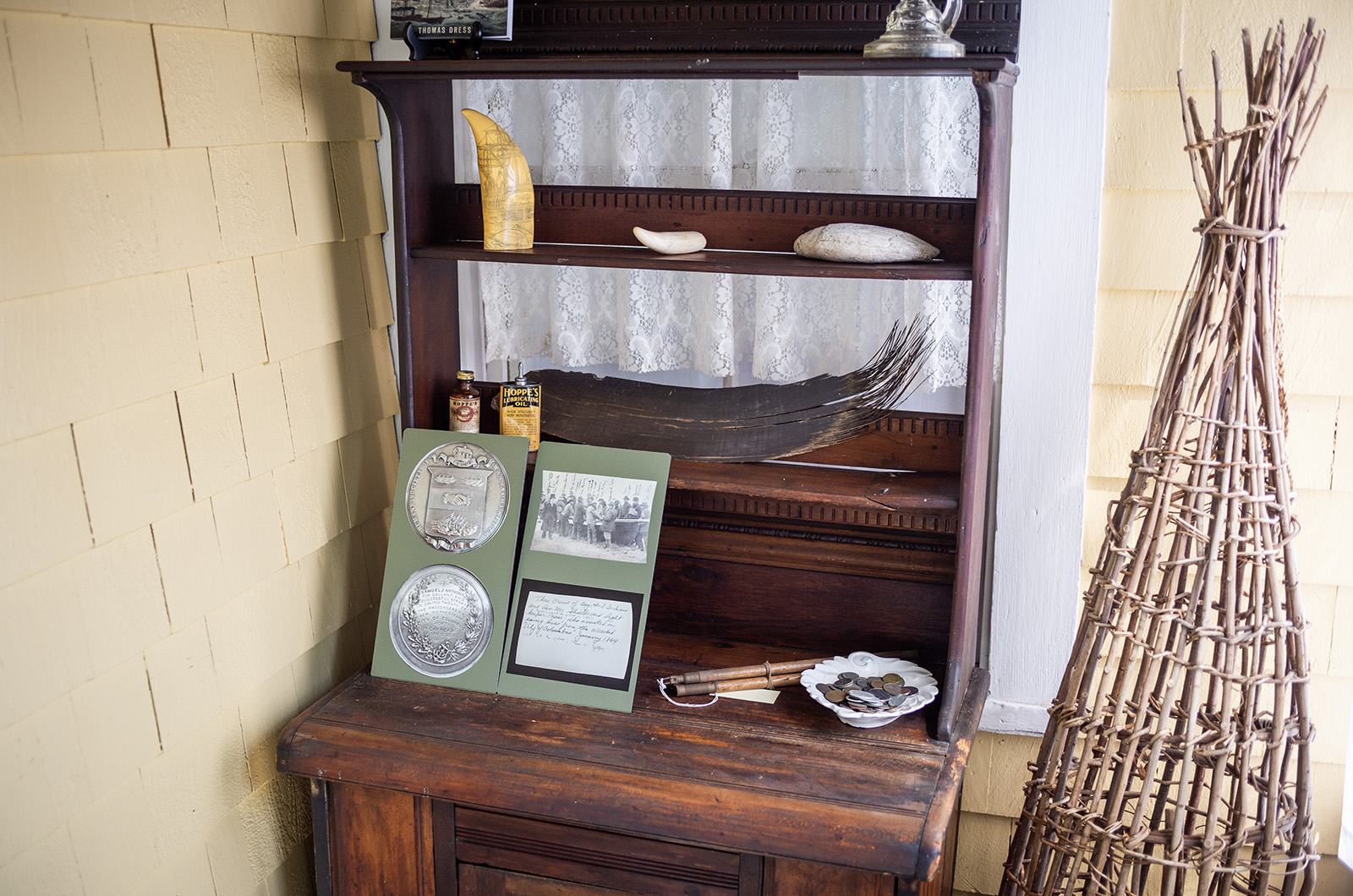For NaDaizja Bolling, director of the Aquinnah Cultural Center, it is important to have a museum that is centered on self-determination.
"We put material out that some other museums wouldn’t, but that’s our prerogative. This is what we feel is appropriate and how we want to tell our story,” Ms. Bolling said. “We’re allowed to do what we want with the things that are ours. That self-determination is so important here.”
The Aquinnah Wampanoag Indian Museum, a component of the Aquinnah Cultural Center, recently opened for the season. It is located on the Aquinnah Circle in the Edwin DeVries Vanderhoop Homestead, a historic home built in the 1890s. It’s mission is preservation and education related to the history and culture of the Aquinnah Wampanoag people. This year the museum is expanding its programming to include walking tours and visiting exhibits.
On the first floor of the historic home artifacts related to Aquinnah Wampanoag history and culture are displayed and docents are available to lead guests through the house.
A basket made from the shells of horseshoe crabs sits on a shelf in one room as an example of traditional art. In another room, there is a cabinet made of wood from the 1884 City of Columbus shipwreck, which occurred near the cliffs in the passage known as the Devil’s Bridge. Rescue operations were almost entirely conducted by Aquinnah Wampanoag volunteers.
Videos document several events throughout history, including the origin of the National Day of Mourning, an annual protest held in November, and the brutal kidnapping of Epenow, one of many Wampanoag people who was taken and enslaved by Europeans in the early 1600s.
According to Ms. Bolling, she and her coworkers look through the museum’s collection to determine what will be on display for the summer. Alongside those selected materials, the museum hosts two additional exhibits this season.
The work of Julia Marden, an Aquinnah Wampanoag artist, will be on display in July. The exhibit includes a turkey feather mantle, a garment similar to a cape and four wampum belts, all made by Ms. Marden.
“Last year, she finished an entirely twined turkey feather mantle. We believe it’s the first of its kind to be constructed with this method in over 400 years,” Ms. Bolling said. “That turkey feather mantle will be coming here along with a series of three wampum belts that tell different segments from Wampanoag history starting pre-contact until now.”
The August exhibit, opening on August 7 and running through Sept. 8, will also feature wampum.
Wampum is made from the white and purple shells of quahaugs and whelk and continues to be used by the Aquinnah Wampanoag and other indigenous peoples along the east coast for a variety of purposes. The focal point of the exhibit is a belt created by several artists.
Andre Strongbearheart Gaines, an artist and member of the Nipmuc Nation, made the weft for the belt from deer hide using a process called brain tanning in which deer skins are submerged or coated in animal brains as part of the leather making process. Ms. Marden created the design for the belt, and Jason Widdiss, an artist and member of Wampanoag Tribe of Gay Head Aquinnah, oversaw the making of the wampum beads, which were contributed by other Wampanoag artists.
“It was a really neat effort. It was intertribal,” Ms. Bolling said. “When you see it, it’s just incredible how many beads were needed.”
Starting in July, Janette Vanderhoop will lead walking tours on Thursdays at 4:30 p.m.
The museum’s programming and exhibits are only a fraction of the work done by the Aquinnah Cultural Center, which was founded in the late 1990s to provide cultural programming for tribal members and educate the local, non-tribal community.
“As director, a lot of my focus has been re-channeling our energy to make sure that we’re empowering our tribal families. The programming is heavily skewed in that direction,” said Ms. Bolling. “We have to make sure that the next generations of people are coming up with the awareness and the historical background to be able to run this place or to be the next authors and help us share our history and our art and our culture.”
This year marks the two-year anniversary of cultural nights, an event started by Ms. Bolling and her sister Tysonnae Aiguier-Bolling, the cultural center’s program coordinator. Cultural nights, which are only open to tribal families and guests, began as a chance to bring people together while they craft. The event has expanded to include songs and dance, sharing cultural stories and learning to weave.
“Maybe five people came to the first few. After that, we got such warm feedback from those who were there,” Ms. Bolling said. “Having that moment of dedicated time to unwind, engage in cultural activity, have some light refreshments, it’s been really rewarding.”
Ms. Bolling added that determining whether an event will be closed to the non-tribal community, like a regalia making workshop, or open, such as an author talk, depends on the situation.
“There’s an educational component to all of the programs, of course, but for some things, I wonder about the appropriateness or necessity for someone outside of the community to do that,” she said. “When we talk about uplifting others, or celebrating the works of artists or museum exhibits, those are all public because that’s information and people who we really want the general public to know about.”
The Aquinnah Wampanoag Indian Museum is open Wednesdays through Sundays from 11 a.m. to 4 p.m. through Sept. 22. For a calendar of events visit aquinnah.org.









Comments (1)
Comments
Comment policy »